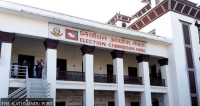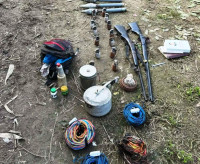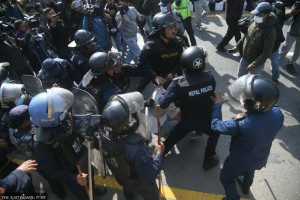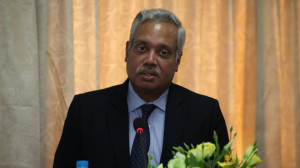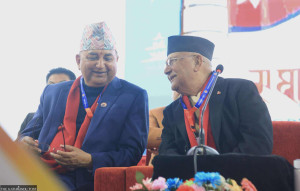National
Left on track as alliance move proves right
When the CPN-UML and the CPN (Maoist Centre) on October 3 announced what they called “left alliance” with an aim to go to the House of Representatives and Provincial Assembly (PA) polls together, many were skeptical about their long-term union.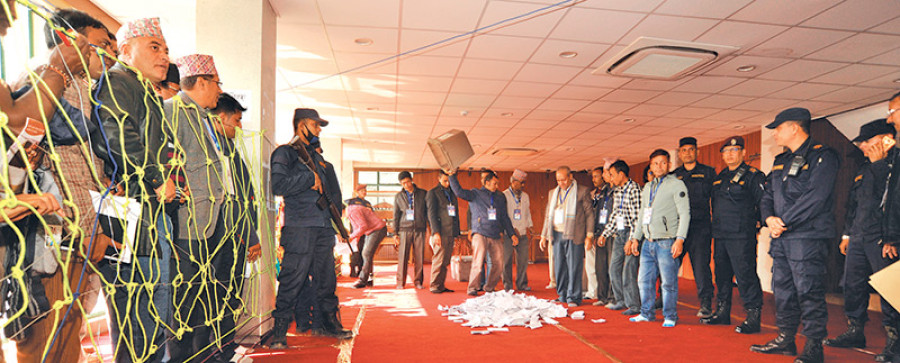
Tika R Pradhan
When the CPN-UML and the CPN (Maoist Centre) on October 3 announced what they called “left alliance” with an aim to go to the House of Representatives and Provincial Assembly (PA) polls together, many were skeptical about their long-term union.
The UML was buoyed by its performance in the local elections, while the Maoist Centre, which faced a drubbing, was in search of a prop to lean on. Both the parties—and their top leaders-held massive campaigns throughout the country in the run-up to the polls. If preliminary results are anything to go by, the Left, it seems, will have the last laugh. When vote counting for the first phase of elections held in 32 districts started, the left alliance immediately emerged as the leader in several constituencies.
Until 10:30pm on Friday, the UML had won five HoR and nine PA seats and was leading in 56 HoR and 50 PA constituencies. Similarly, the Maoist Centre had won one HoR and five PA seats, maintaining lead in 23 HoR and 32 PA constituencies. The Nepali Congress, which has fielded candidates in all 165 constituencies, was yet to claim any constituency but had won three PA constituencies. Its lead was in 15 HoR and 10 PA constituencies.
Prior to polls, political analysts were claiming that the voting trend of local level elections would hardly reflect when people go to vote for the federal parliament and provincial assembly elections.
But the ongoing trend has vindicated the left alliance.
“This time Left voters were happy to see the two leftist forces united,” said analyst Jhalak Subedi, explaining what could have put the left alliance on the top. Communists in Nepal have always fought elections under various parties, resulting in split of votes, which largely helped the NC. Analysts also said that the voters this time seem to have seen the possibility of political stability under the left alliance.
Both the communist forces had made prosperity through stability their rallying cry during their get-out-the-vote rallies. “People this time, it seems, voted for political stability, which the left alliance made its plank for the elections,” said analyst Shyam Shrestha. The analysts are of the view that the Left this time managed to strike the right chord with the voters.
As far as the NC is concerned, it failed to create an appeal among the voters, as it made “left alliance means authoritarian regime” its refrain. There was a stark difference between the campaigns of the Left and the NC, as the former made a pitch for stability, the latter attempted to instil fear among members of the public saying the left alliance would impose an authoritarian regime, according to observers. But will the UML and Maoist Centre unite after the elections as they had announced earlier in October?
“Failing to announce party unity at the earliest would mean not honouring people’s verdict,” said Shrestha.
Based on the votes the parties had garnered in the local elections, the Left is expecting to claim more than two-third constituencies. “The alliance was formed by the two parties after taking the voting trend of local level polls into consideration,” said Maoist leader Janardan Sharma, one of the key leaders involved in bringing the two communist forces together.
Besides their pocket areas like Rukum, Rolpa, Kalikot, Jumla and Jajarkot, the Maoist Centre is also leading in Kathmandu-6, Lalitpur-3, Nuwakot-1, Jhapa-1, Morang-4 and 5, Bhojpur, Solukhumbu, Udaypur-2, Ramechhap, Sindhupalchok-1 and 2, Lamjung, Baglung-2, Dang-2 and Banke-1. Breaking the tradition, the UML has won in Mustang and Manang where the NC used to hold sway.




 18.12°C Kathmandu
18.12°C Kathmandu

%20(1).jpg&w=200&height=120)

